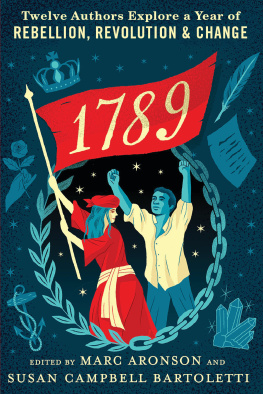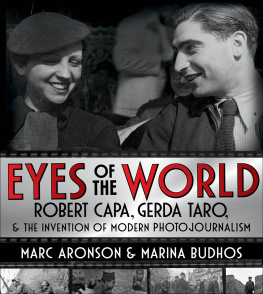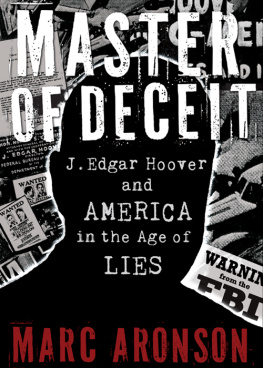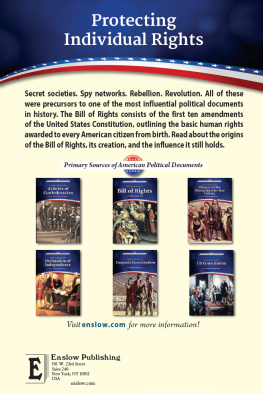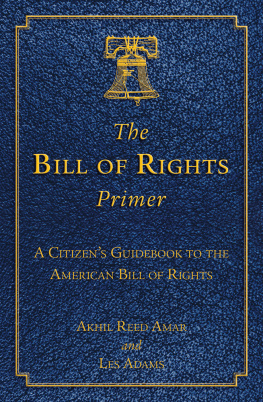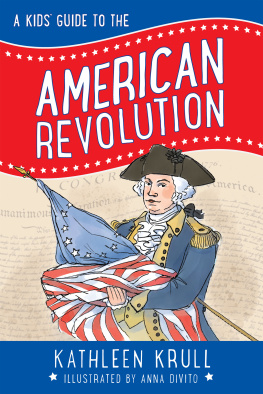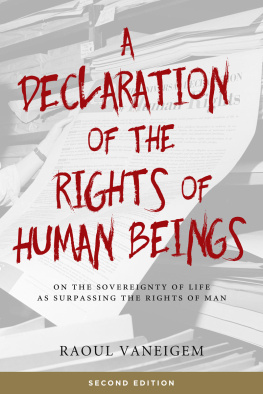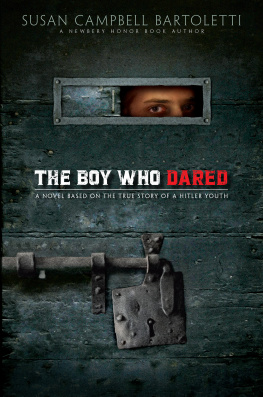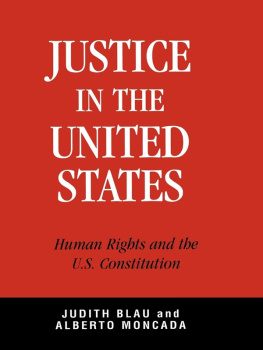
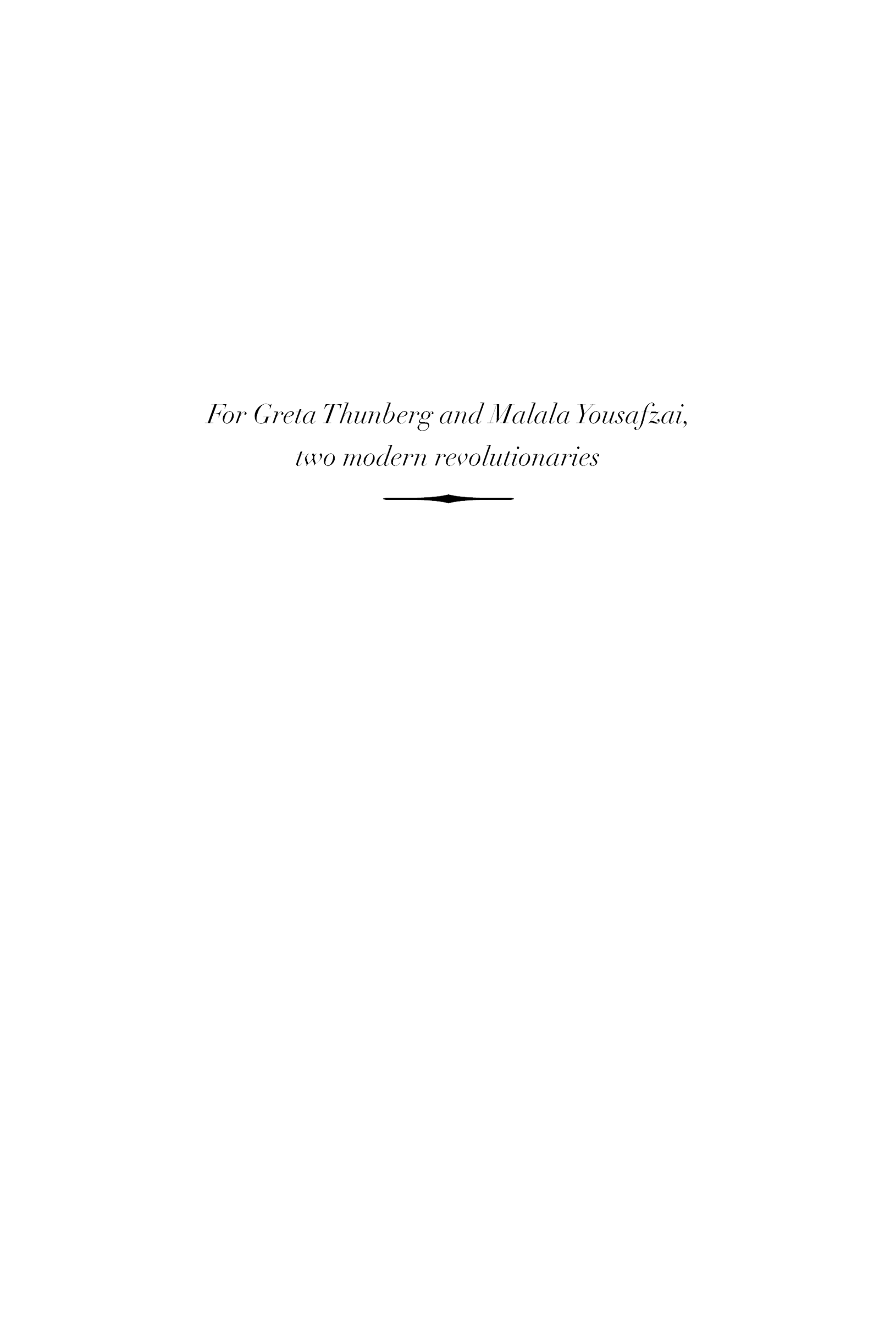
T HE FRENCH REVOLUTION , the Declaration of the Rights of Man, the European slave trade; the American Revolution, the Bill of Rights, slavery in America. When these subjects come up in a US classroom, they are treated as separate topics one set arrives in world history, the other in American history. But, as the chapters in this book show, such a separation is entirely artificial. Events in America influenced those in Europe, the Caribbean, and Africa; events in the Pacific were shaped by those in Europe and America. Ideas, people, and money were shuttled across the worlds great oceans.
In all of this movement, two great forces swelled and clashed: ideas of liberty, freedom, and rights; and the fact of enslavement and subjugation. The two opposing forces crystallized a single question one still furiously debated today: What is a man? If, as first America and then France declared to the world, all men are equal, who is a man? Males? White males? Rich males? Christian males? Each partial answer opened a new question: If men, why not women? If Christian, could anyone become equal by converting? Who gets to be white, and why should that matter?
The idea that there are some rights that every person owns simply by being a person challenged every order based on noble birth. Soon enough the idea of such rights would do battle with hierarchies of wealth, age, race, and gender. The idea of who or what has rights continues to evolve. Today some people believe that everyone has a right to economic security and that the earth the environment has rights, as do animals. Hundreds of years from now when someone writes about our time, what obvious violations of rights will they see?
The thinkers of the eighteenth century opened a door we are still peering through today. In this anthology, readers will encounter ideas, beliefs, and causes rippling across thousands of miles. People, events, and topics come up in a certain way in one chapter and then differently in another. You begin to feel how much was shifting in that tumultuous year of 1789. Today newscasts endlessly announce breaking news. We hope that these chapters give readers the sense of how ideas broke across continents, of how immediate and alive the world was then.
We begin with France. In the opening chapter, Tanya Lee Stone sets the stage, and youre there, in the streets of Paris, amid the fishwives who lead a protest march that helps to launch a revolution. Next Karen Engelmann extends and reverses the story of 1789, showing how a contradictory Swedish king changed his country and earned the anger of noblewomen who, driven by a desire to retain their status and privileges, protested against expanding rights.
Amy Alznauer takes us across Europe to a battlefield where amid the bombing, we view a different side of that dramatic year revolutions in thought as a mathematician traces the digits of pi. Susan Campbell Bartoletti shifts our attention to a new way of examining events in Paris: through the portraits of the queen being painted by a talented female artist. Then as now, how a powerful woman presented herself or was presented to the public caused endless debate. Marc Aronson begins in Paris that same year, where a pregnant American teenager faces a choice that points directly to the central question in this book: the expansion of rights and freedoms, the reality and consequences of enslavement.
The central issue of slavery expands as Joyce Hansen recounts the life of a former slave whose autobiography, published in 1789, became a key tool in the abolitionist movement. Summer Edward takes us inside an arena of the global contest against slavery as she describes the journeys of a Methodist minister who brought ideas of equality to the Caribbean.
Cynthia Levinson and Sanford Levinson take us to one of the seemingly more familiar events of 1789: the passage of the US Bill of Rights in Congress. They show how keeping an eye on France helps us to view the bill, its limitations, and the ongoing conversations about its meaning in new ways. Christopher Turners piece shines a new light on the issues around rights in North America, looking at the year 1789 and the American Revolution through the eyes of the Seneca and the other nations of the Haudenosaunee, the Six Nations.
Back in Europe, Sally M. Walker traces the findings of a British geologist whose persistent explorations prove that the earth is far older than had been believed and has evolved over millions of years. Challenging the biblical understanding of the earths age was as revolutionary as challenging the rule of a king. Finally, linking Europe, the Pacific, and the Caribbean, Steve Sheinkin gives us the drama of a mutiny on board a British ship and leaves us with one more mystery to ponder. How much were people, spread throughout the planet, shaped by the explosion of new ideas?
In this book we present France, the United States, and the world at the tipping-point moment when so much seemed possible, and yet such profound issues remained to be faced a bit like the possible tipping-point moment we face today.
To give some sense of how people at the time responded to these events, ideas, and conflicts, we have included four sets of contemporaneous quotations. The sources range from poems to political arguments, essays to books. The quotations are grouped based on their tone: exhilaration, abomination, inspiration, conclusions.
One of the most important quotation threads is the debate that had Thomas Paine and Mary Wollstonecraft on one side and Edmund Burke on the other. Paine loved the French Revolution of 1789 and all it promised, though he opposed its later turn to violence. Burke, who had supported the American Revolution and created the first serious and detailed plan to abolish slavery in lands controlled by the United Kingdom, thought the French Revolution was a terrible idea that would lead to ever greater violence and death until a dictator took over, which proved to be right. Burke believed that it was too dangerous to utterly disrupt the existing habits and structures of a society no matter how flawed. Paine and Wollstonecraft disagreed with Burke; society had to be restructured. Paine argued for the rights of those abused and deprived under current conditions. Wollstonecraft furthered Paines position but argued that women deserved the same rights and privileges of men. Versions of this debate continue to this day.
This is the second nonfiction anthology that we have created. Just as we did with our first anthology, 1968, we invited authors to explore aspects of the year 1789 that interested them. Each chapter is an opening, a window, to people, ideas, and events that were central then and are still of interest now. We encourage readers to browse to find which topic, which writing style, excites their curiosity, and then return again as one chapter speaks to another, and that tumultuous year of 1789 comes alive.
Marc Aronson and Susan Campbell Bartoletti
O H! pleasant exercise of hope and joy!

